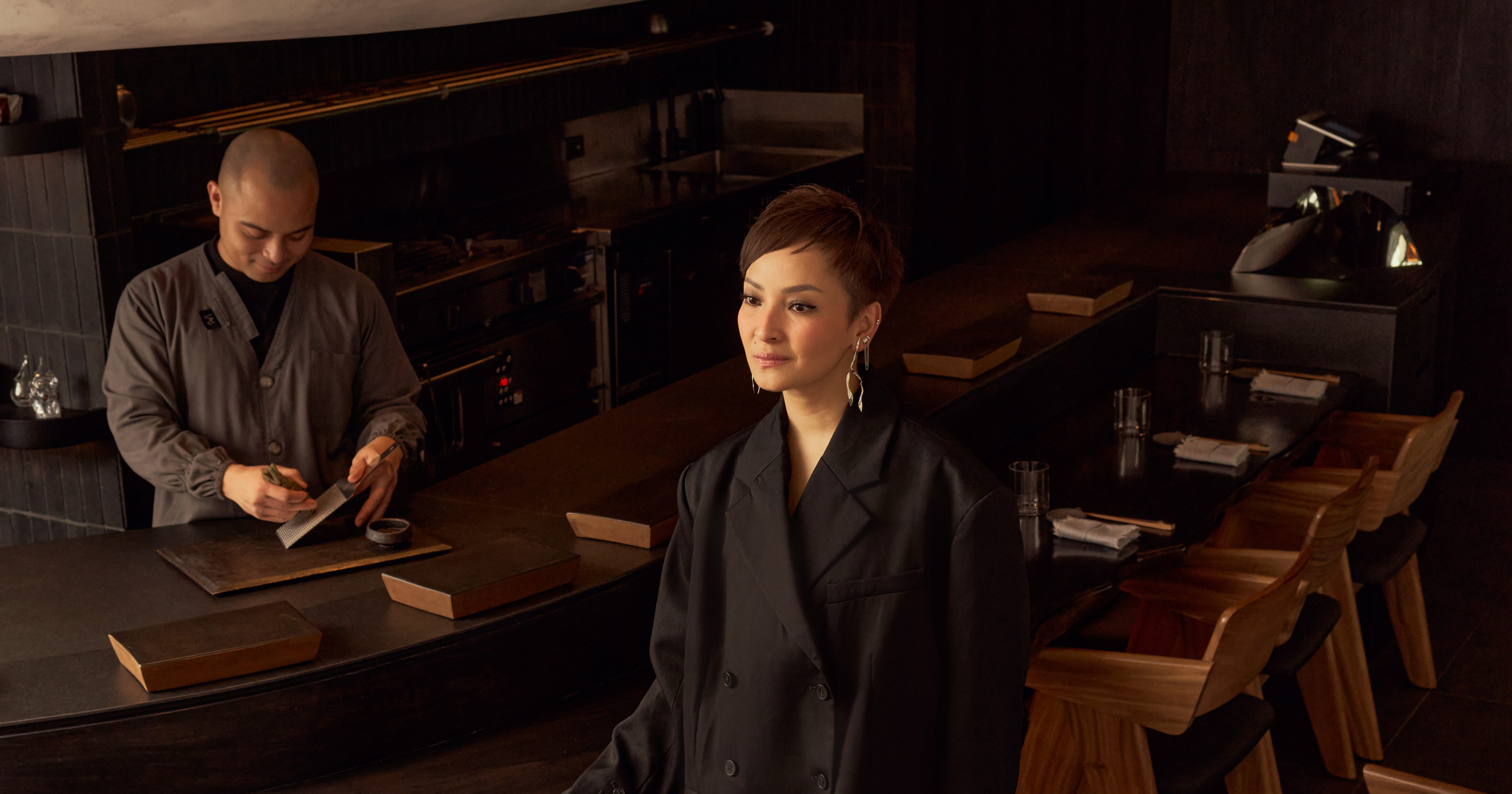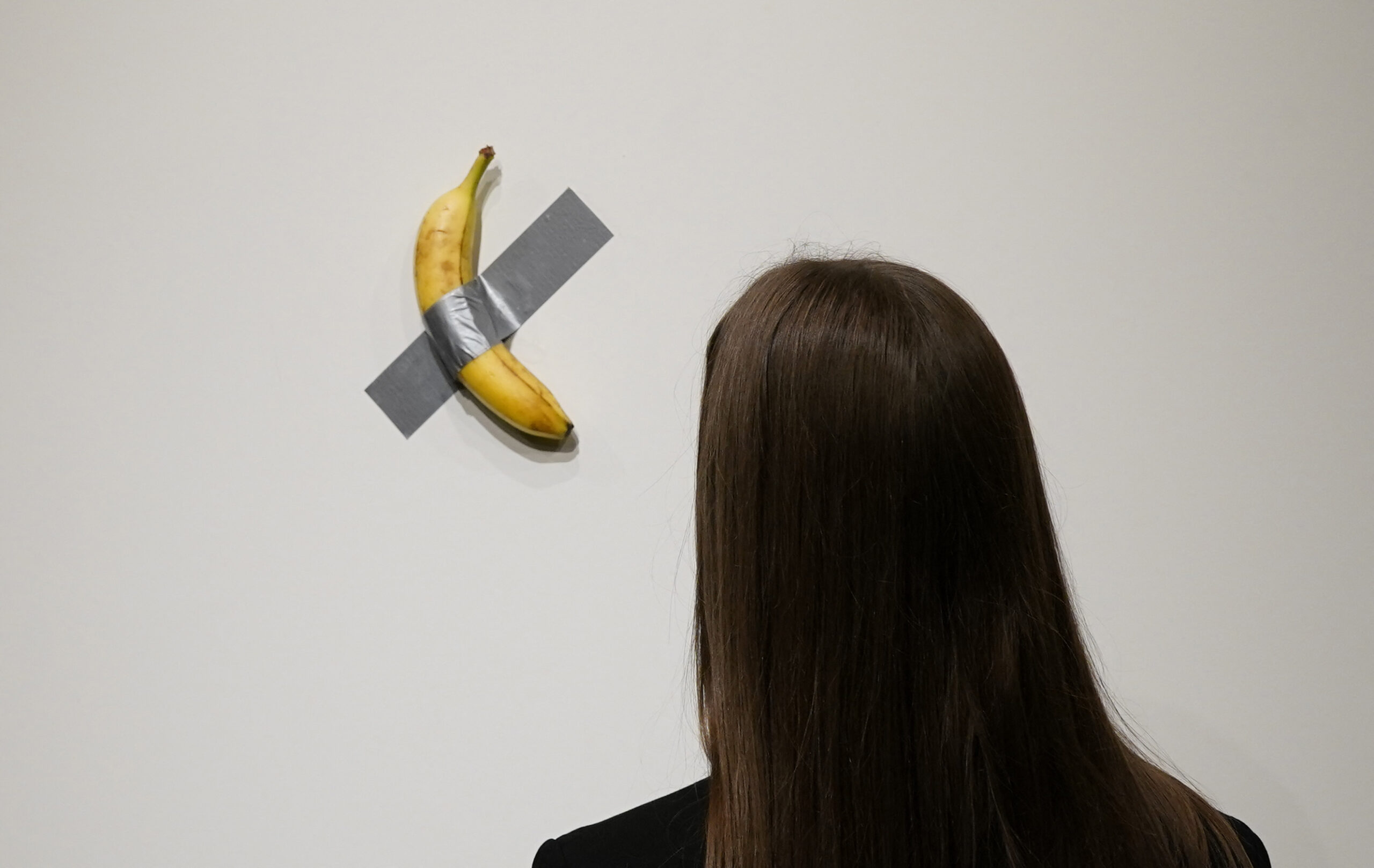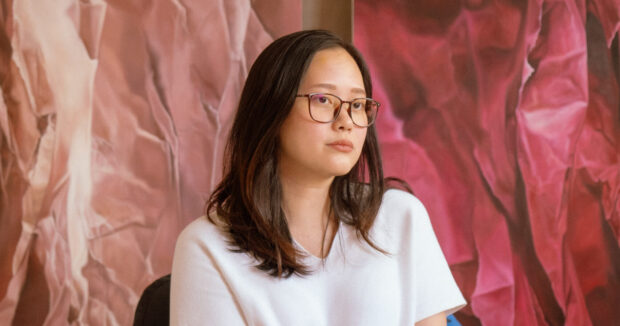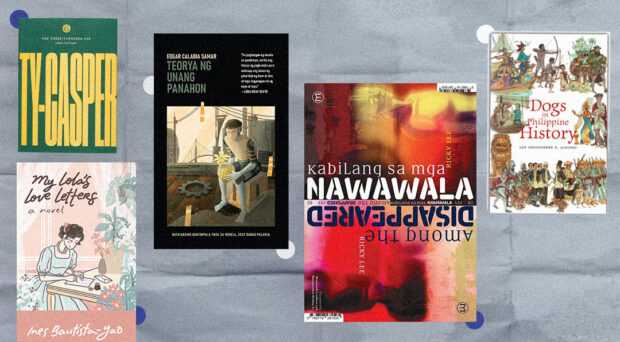Behind every great man stands a woman. In chef Bruce Ricketts’ case, it’s Jae Pickrell
They say behind every great man stands a woman.
While chef Bruce Ricketts is known for pioneering Manila’s culinary scene with Mecha Uma, Sensei, Ooma, and La Chinesca, his wife Jae Pickrell has quietly steered the vision and operations behind these celebrated dining experiences.
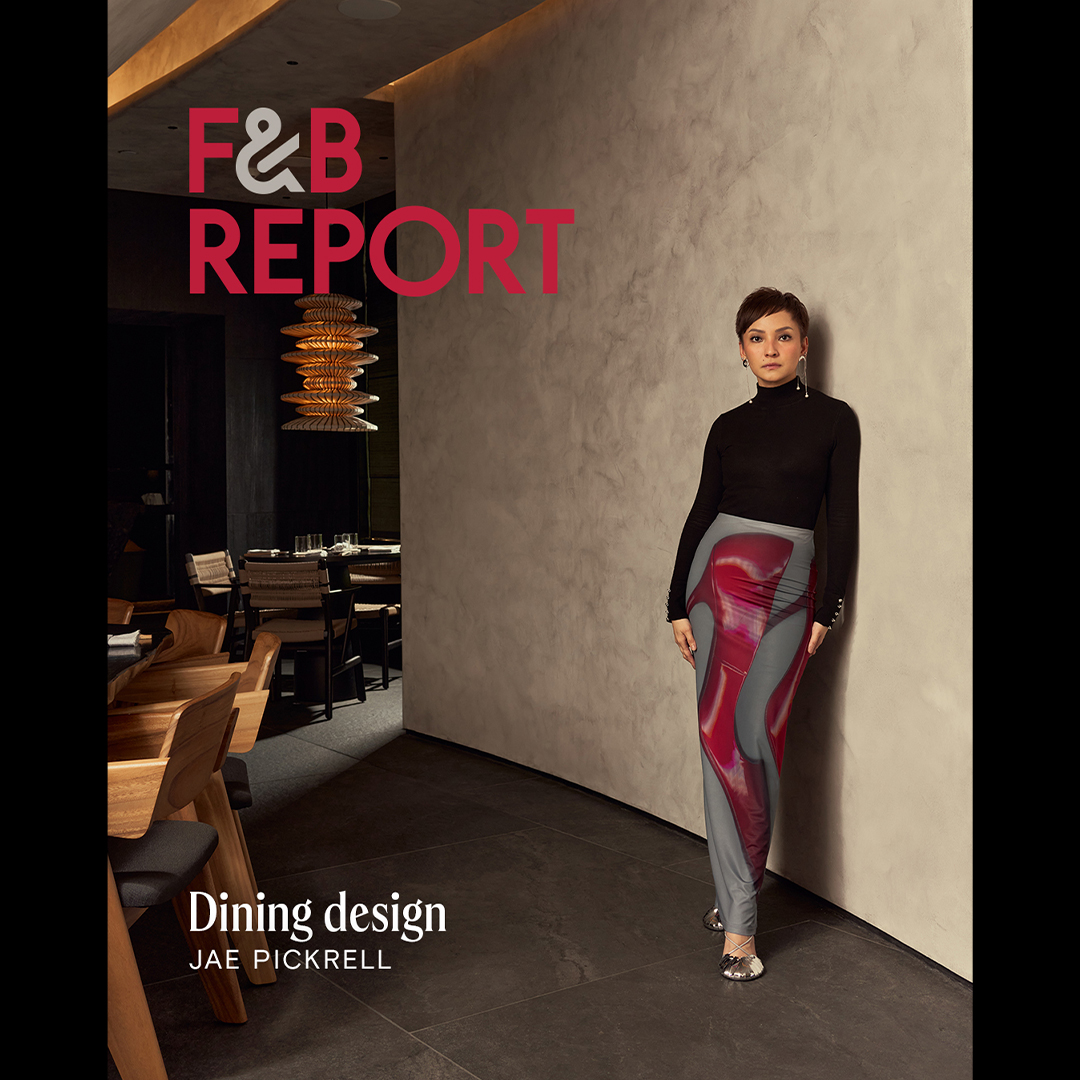
Many are familiar with Pickrell’s seminal creative work at Preview Magazine. In an unprecedented transition to the restaurant industry, Pickrell applies her keen editorial eye to her husband’s establishments. Largely self-taught, she meticulously manages the restaurants’ operations and accounting while designing the spaces with a fine-toothed comb. Her eye for excellence is most recently put to work for their latest venture, the sushi kappo restaurant called Iai, which opened in BGC in September.
“Everything here is absolutely intentional, from the choice of materials to every detail our guests experience. I’ve had a heavy hand in all of it,” Pickrell says.
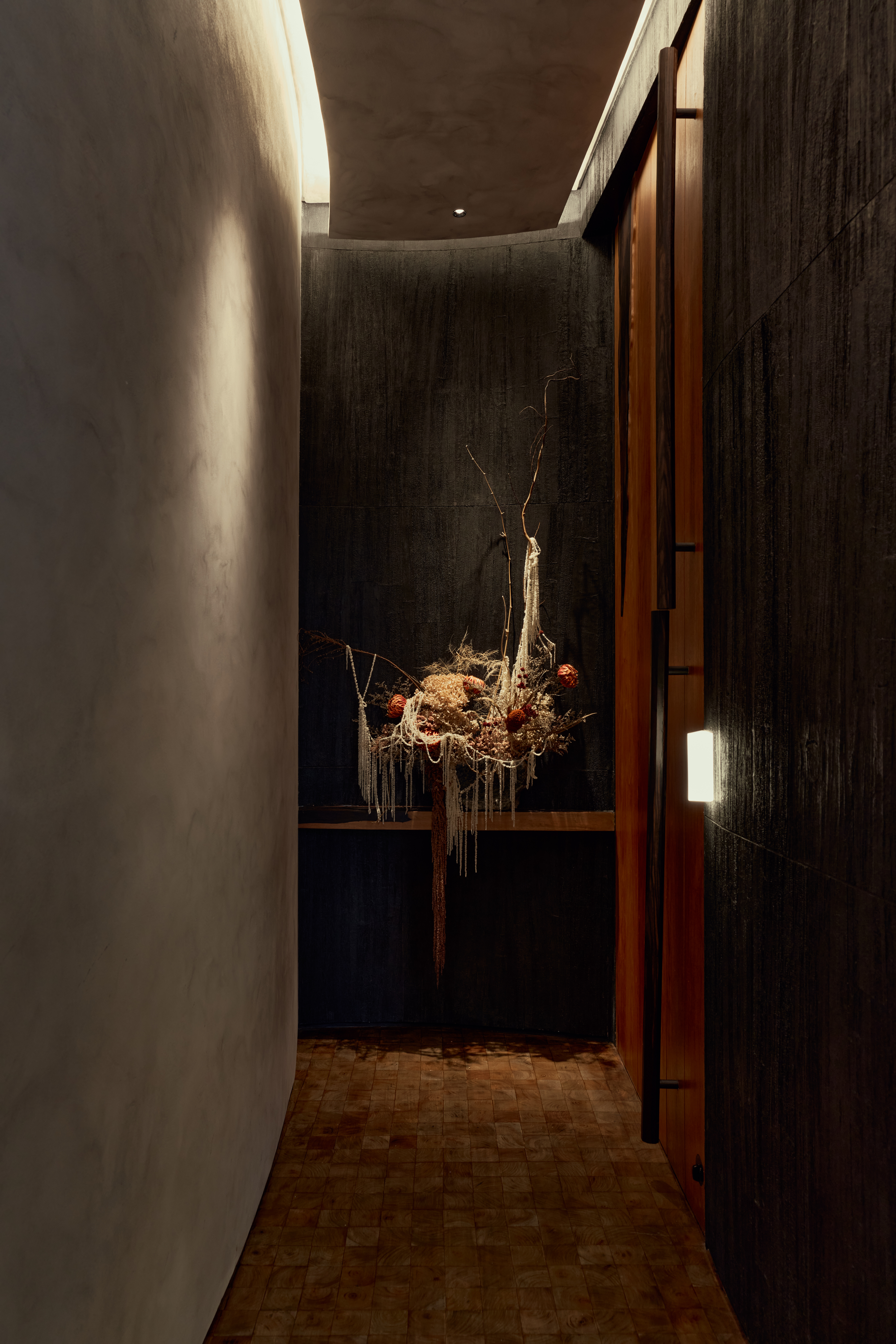
“One of my favorite things to do is source beautiful items, which connects to my previous life as an editor,” says the present-day restaurateur, “There are many similarities in the fast-paced work and skills that have translated well into my current role, perfectly complementing the partnership that Bruce and I have. This allows him to focus on what he does best.”
I ask Pickrell if she cooks. “Nope, that’s why I married this guy!” she responds with a laugh. Their shared love for food sparked their relationship, recalling an early date when she swatted Ricketts’ hand as he dipped uni into soy sauce—a sushi faux pas.
Ricketts is self-taught and in many ways, the two of them are “kind of the same,” Pickrell says. As a literature major, her approach is simply “going with the flow.”
“Later on, I find out that I’m actually doing the right thing. It’s not just about conceptualization and the beautiful things—90 percent of my work involves day-to-day tasks like accounting, food costing, operations, staffing, and inventory.”
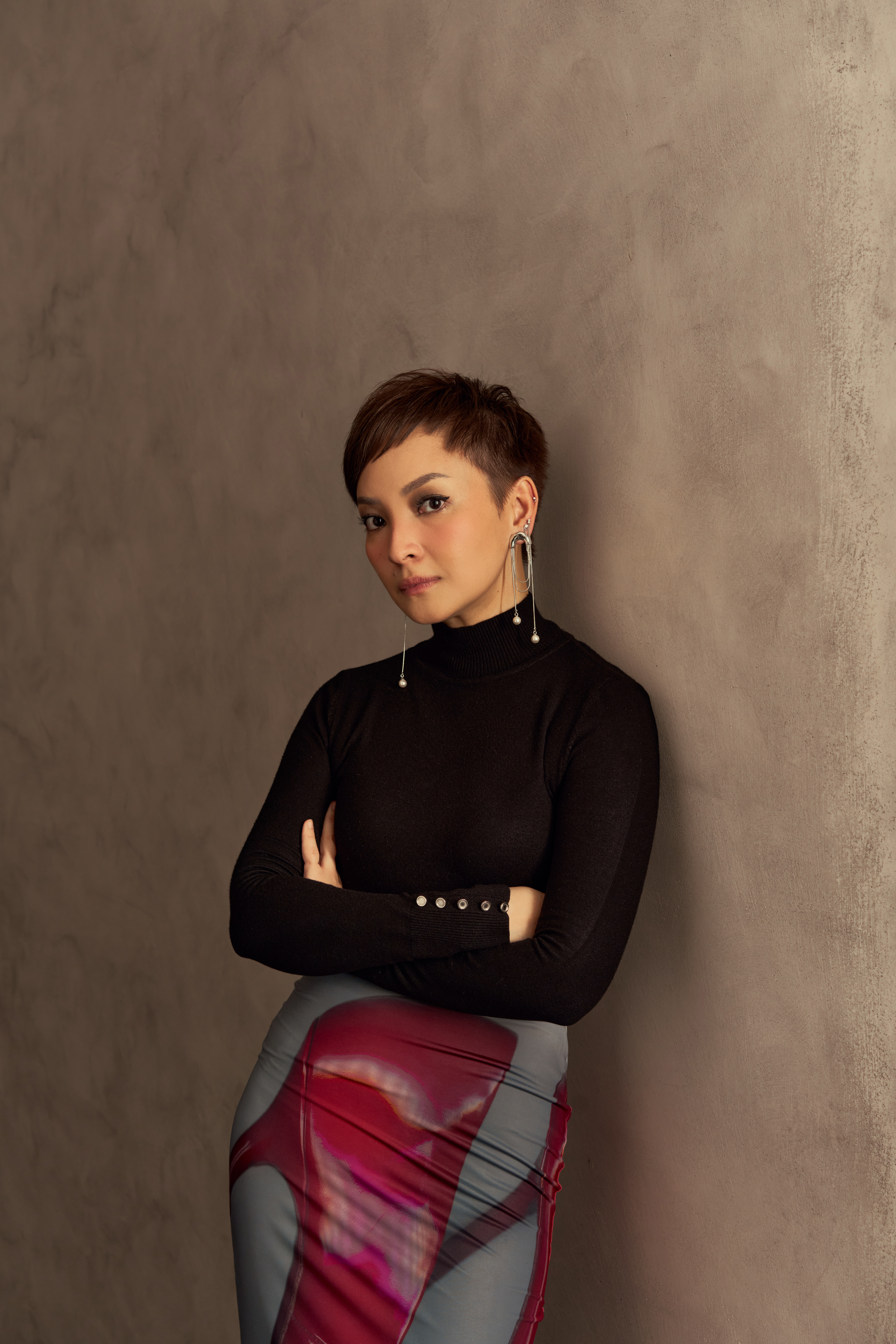
While Ricketts describes his style as “whimsical” and “freestyle,” Pickrell brings a methodical eye to refine their creative vision into a symbiotic partnership.
“Jae, by default, is still an editor inside. She is very intelligent, and she has a way to respect artists and creatives,” Ricketts gushes. “She has a way to understand what they do and make their eyes light up.”
Design foundations
With a predominantly black and brown palette, subtle geometric shapes, and a mix of wood, marble, and local fabrics, Iai elevates the basics so that when you enter the space, the atmosphere feels both familiar and sophisticated.
Pickrell collaborated with the sister-duo Charisse and Coleen Ong of Studio Ong known for their work on the Filipinas Heritage Library and the instantly recognizable Toyo Eatery and Inatô. “I came to them with a strong vision, influenced by brutalism and wabi,” she says. This wabi aesthetic embodies simplicity and intimacy, celebrating natural objects.
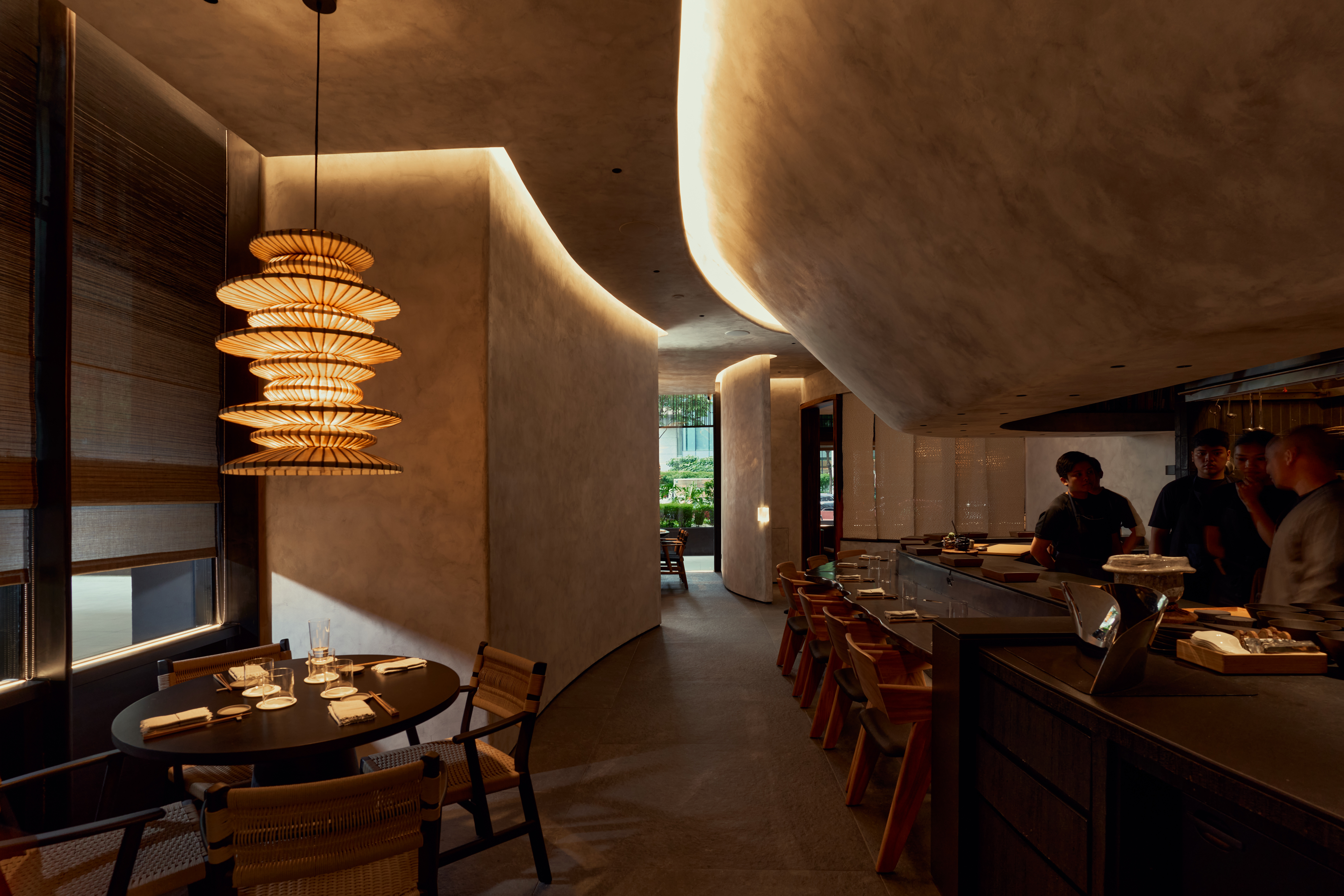
If there’s a vein that pulses through the whole restaurant, it’s that much of the Japanese design inspirations are beautifully localized by Filipino artisans. “A lot of these things I find interesting and want to shine a spotlight on. It’s been a lot of looking for and developing relationships with artisans in Japan and here in the Philippines, and paying tribute to them.”
Pickrell credits her affinity for all things Japanese from her upbringing, as her stepfather is Japanese, enjoying Japanese cuisine and immersing in the culture. She provided the reference materials like “Wabi Inspirations” by Axel Vervoordt and Jun’ichirō Tanizaki’s essay “In Praise of Shadows,” which explores the differences between Western and East Asian aesthetics. While the West emphasizes light, the East values subtlety, a principle reflected in Iai’s interior and lighting design.
Precise play with light and shadows
Pickrell’s appreciation of subtle shadows is evident in the soft, diffused lighting fixtures inspired by traditional Japanese lanterns. She sourced pendant lamps from Indigenous, a social enterprise that creates items from sustainable materials. Made from abaca leather paper, these whimsical, washable lights resemble Filipino bilaos. The whimsical lights are washable, too.

Down to the aperture, Pickrell made sure the light fell on the wood table counter in such a way that its brightness covered all the way to the edge. “One thing I hate when you’re at restaurants is when there’s a vignette situation and your food ends up in the shadows. You want to take a pic, but you have to push it aside just to get it properly lit!”
Keeping warm with natural wood
With many natural elements in the space, the wood keeps the restaurant warm and grounded. Pickrell and Ricketts’ dynamic shows in their approach to designing the restaurant’s centerpiece—the wooden counter. When Ricketts simply knew he wanted “good wood,” Pickrell orchestrated an exhaustive search, examining countless pieces from lumber yards, painstakingly selecting and arranging the timber to find the perfect match.
They settled on massive pieces of wood from Silang, Cavite. It took some time to decide how to design the bar table to achieve the perfect “live edge,” considering the natural holes for positioning food and tableware. “These are things you kind of take for granted. It’s just a wooden counter, but as you go through the process, you realize how much work actually goes into it,” Pickrell reflects.
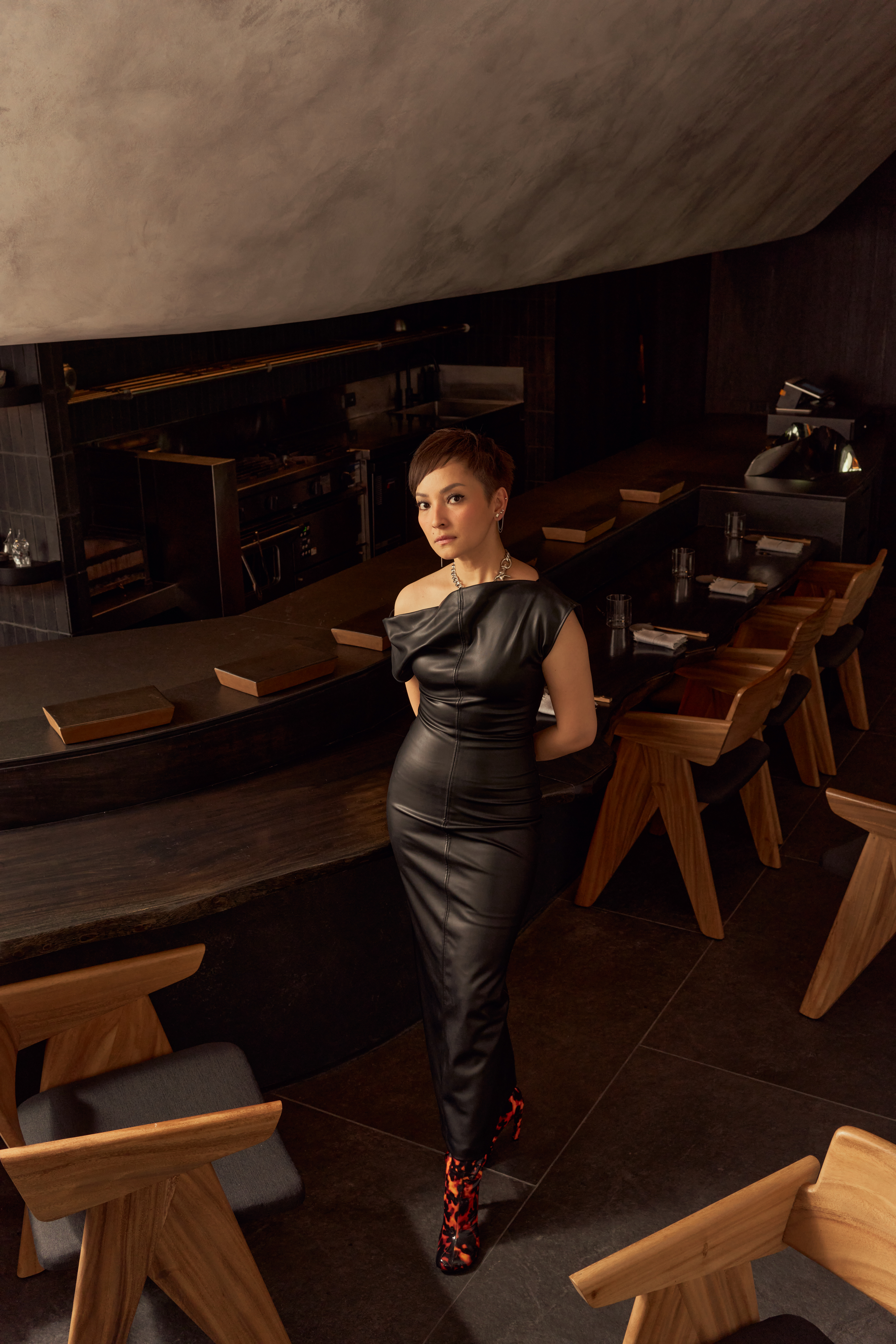
In the private dining room, panels hang from the ceiling that can be slid open or closed. Unlike typical creaky plastic panels, these curtain-like panels are made of white leather and boxing hand wraps (a nod to Ricketts’ martial arts background), woven by an artisan called Cebu Interlace. The wood holding the weave together is made of kamagong, inspired by arnis sticks, further reflecting Ricketts’ martial arts history. Pickrell shares that all these materials serve as metaphors for her and her husband.
Another wood element is the striking black wall in Iai’s facade. The couple shared that they initially wanted to work with the Japanese technique of Shou Sugi Ban, which involves preserving wood by charring its surface.

“But we couldn’t figure out a way to do it indoors without the ash transfer,” Pickrell explains. Instead, they collaborated with E. Murio, local furniture makers specializing in tropical woods and materials. On one visit to their studio, Pickrell discovered a panel made from discarded dehydrated banana tree trunks in the corner.
“It was perfect!” she exclaims. “It was already painted black, with no transfer on skin or fabric whatsoever. And it even looks like fish scales. It resembles yakisugi, a Japanese wood preservation method. It was one of those serendipitous moments—Japanese inspiration localized.”
Beyond the facade, this banana tree wood now serves as a pillar for the walls and storage for trays, dishes, and utensils. She also highlights cutlery rests by E. Murio made of kamagong tree bark and brass nails.
The details on the table
Beyond the large furniture and structural elements, Pickrell’s meticulous design decisions extend to the tiniest details. She explains that a Japanese dining philosophy inspires her and Ricketts, where even the smallest elements contribute to the overall experience. In Japan’s top sushi establishments, the ceramics and vessels are as carefully chosen as the food itself, serving as conversation points for discerning diners who recognize specific artists’ works.
Pickrell highlights the chopsticks made of smoked bamboo by artist Kazuho Shimomoto. The cutlery has a distinct aroma that offers a “brief but nuanced scent that adds a little dimension to the whole experience.”

The glasses are from a Japanese brand called Kimura, and in one corner sits a Fritz Hansen ikebana vase. Most of the cutlery is Japanese, but it also features a collaboration between world-renowned designer Kelly Wearstler and Belgian homeware brand Serax. With their double-edged stems, the forks and knives evoke the look of chopsticks. The plates are custom-made by Tokinoha in Kyoto, while the teak trays are crafted by local brand Lamana. The ceramic platform for serving sushi is created by Japanese sculptor Gaku Shakunaga.
In the kitchen, Pickrell reveals a nabe pot used for making sushi rice, an essential element of Iai. Crafted by renowned artist Ippento Nakagawa, the pot features a unique glazing technique that doesn’t interfere with the cooking process. Its white color is also a rarity.
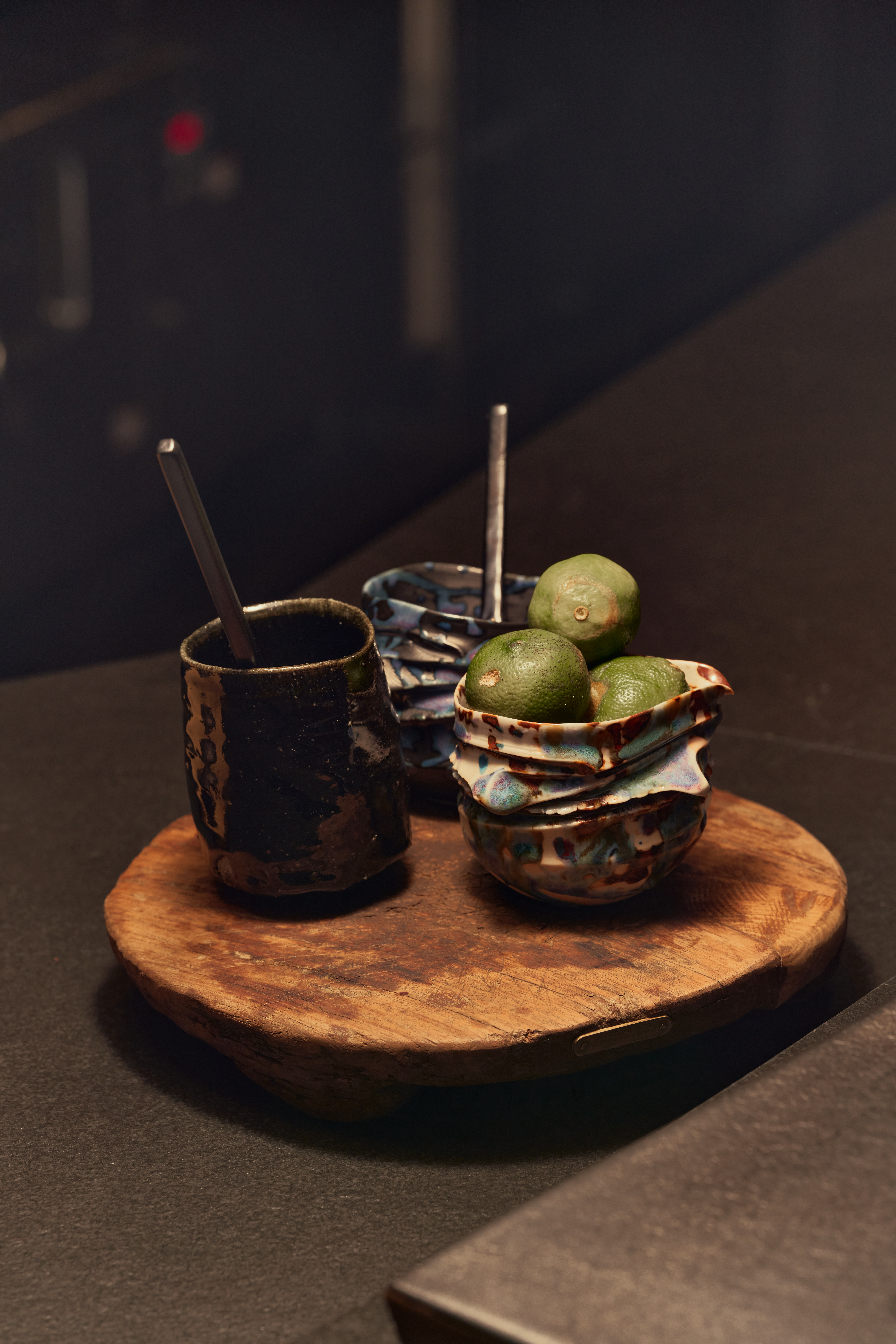
Pickrell lights up when she brings out ceramics by Asato Ikeda—swirling tea cups used for serving hojicha during the dessert course. “I love them so much. They’re wonderfully ergonomic. I came across them in a tea salon, and the owner was kind enough to share the artist’s name.” Instead of opting for the artist’s usual lacquered style, they chose a matte finish for Iai, even though it can be more challenging to work with since it absorbs liquid and color.
While Pickrell curated many of the beautiful items at Iai, Ricketts shares her reverence for craftsmanship. “If you’re a craftsman and you work with very beautiful pieces, you feel unworthy, so you work hard to respect and honor the product,” the chef says.

READ: The business of beautiful restaurant powder rooms
The food of sushi kappo Iai
While every aspect of the interiors is meticulously designed, Iai’s culinary program is a reflection of Ricketts’ evolution and established maturity as a chef. There are two distinct omakase experiences that highlight his refined approach to Japanese techniques while embracing Filipino ingredients and global influences.
The flagship offering is the sushi omakase, a 12- to 14-course journey priced at P8,900 per person, available at both the intimate chef’s counter and the private dining room. This menu is where Ricketts’ creativity shines, featuring four to five innovative appetizers followed by a six- to seven-piece nigiri course, concluding with meat and dessert courses. The menu changes frequently, reflecting both seasonality and the chef’s spontaneous creative impulses. Pickrell shares a previous menu, with otsumamis like toro tart, lobster croustade with oyster cream, abalone tempura, and foie gras, rhubarb, and black sesame. Meanwhile, the nigiri ranges from smoked toro to akami with a wagyu main.
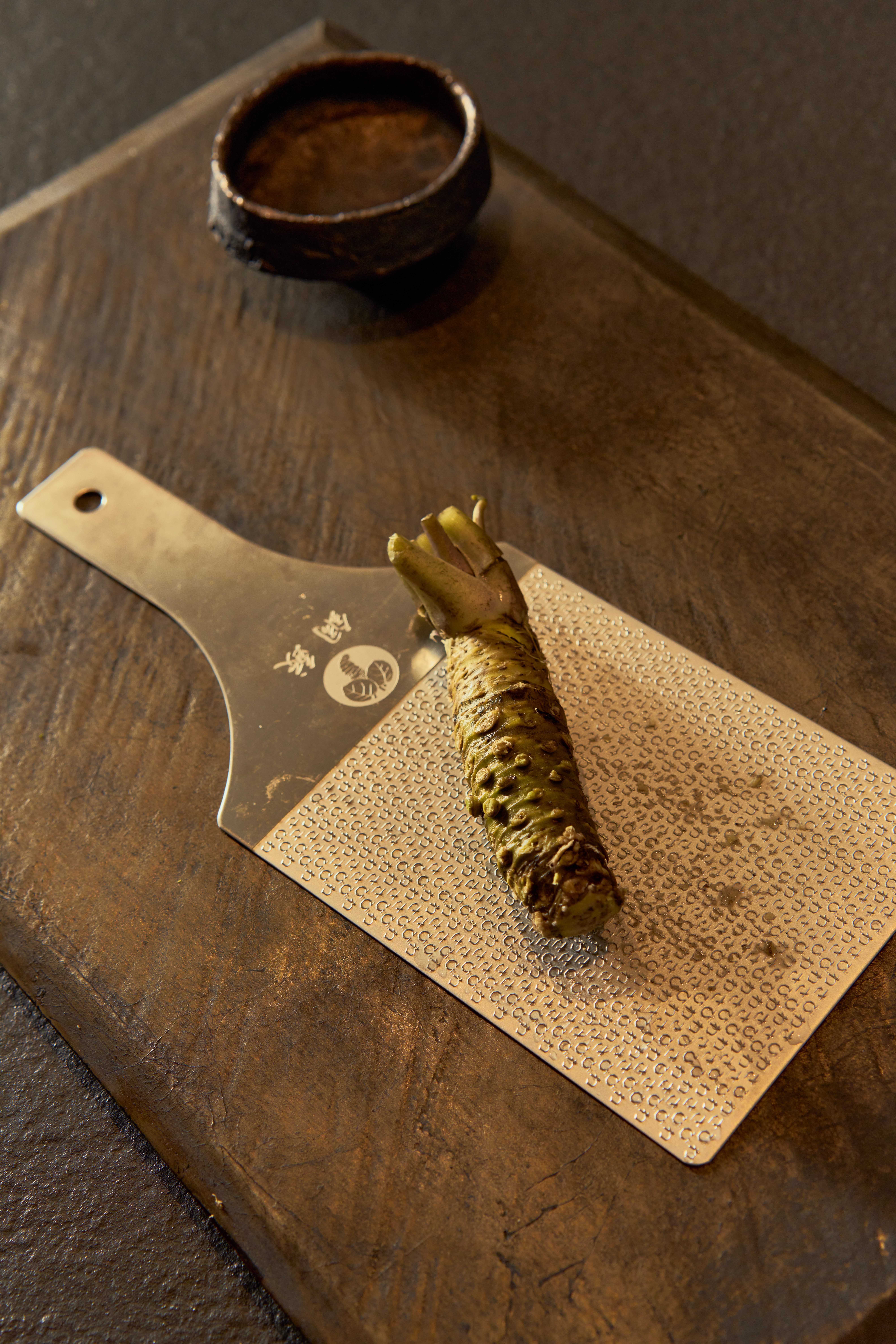
For those seeking a more accessible entry point to Iai’s cuisine, the kappo omakase at P4,500 offers a five-course experience without sushi, featuring a progression of small bites, an appetizer, a fish course, a meat course, and dessert, served at the restaurant’s two dining tables.
Ricketts is committed to sourcing ingredients from Basilan in Mindanao. Through a partnership with a third-generation fishmonger named Twinkle, the restaurant gains access to some of the Philippines’ finest seafood from waters that have remained relatively untouched due to the region’s complex political history. Basilan is particularly renowned for its premium grouper, which local fishermen consider their prized catch. Many ingredients are also freshly flown in from Japan and other countries.
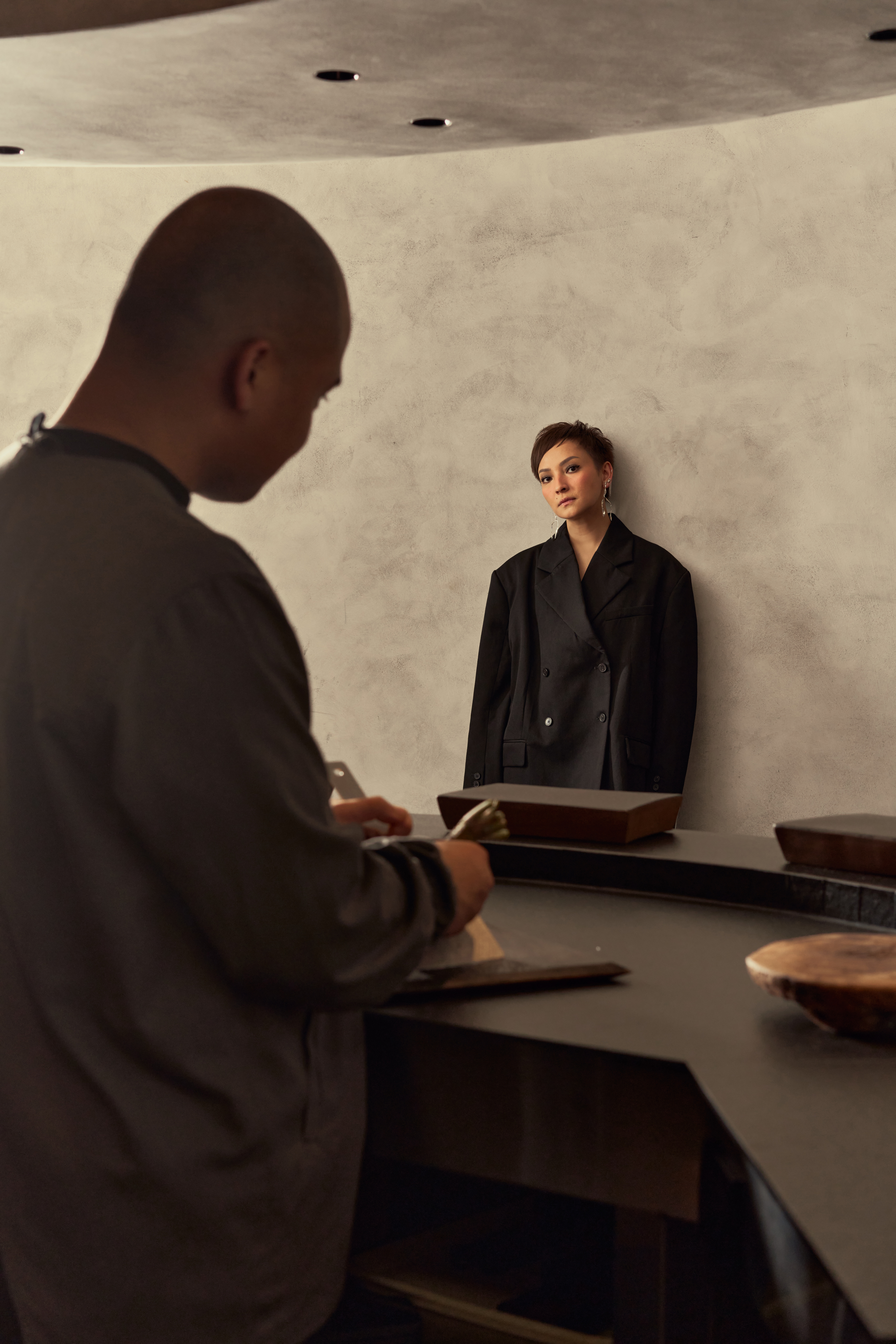
The connection to Basilan allows Ricketts to explore Philippine ingredients more thoroughly while applying the techniques he has mastered over nine years at Mecha Uma. The menu changes daily, influenced by ingredient availability and Ricketts’ creative instincts. This spontaneity is carefully balanced with structure; each menu is customized and printed in-house on Italian Fedrigoni paper. This fall season is especially exciting for the restaurant, as it coincides with the availability of some of Japan’s finest ingredients and calmer Philippine waters for fishing.
While many go for the sushi omakase, we’re surprised to learn that regulars from Mecha Uma often ask for an even more elevated menu. Ricketts shares, “When a customer comes back and can tell where a snapper is fished from or if it was caught during a strong tide, having a customer that also learns makes us work harder.”
**
Ricketts credits Pickrell’s broader vision for allowing him to focus on his craft while she ensures everything else aligns with their high standards. “She’s obsessed with the bigger picture in many ways,” he notes, explaining how her perspective helps him see beyond the kitchen.
While both Pickrell and Ricketts are deeply invested in everything Japanese, her role in design brings a sense of reverence to Japan’s history and artistry, all while keeping things relaxed.
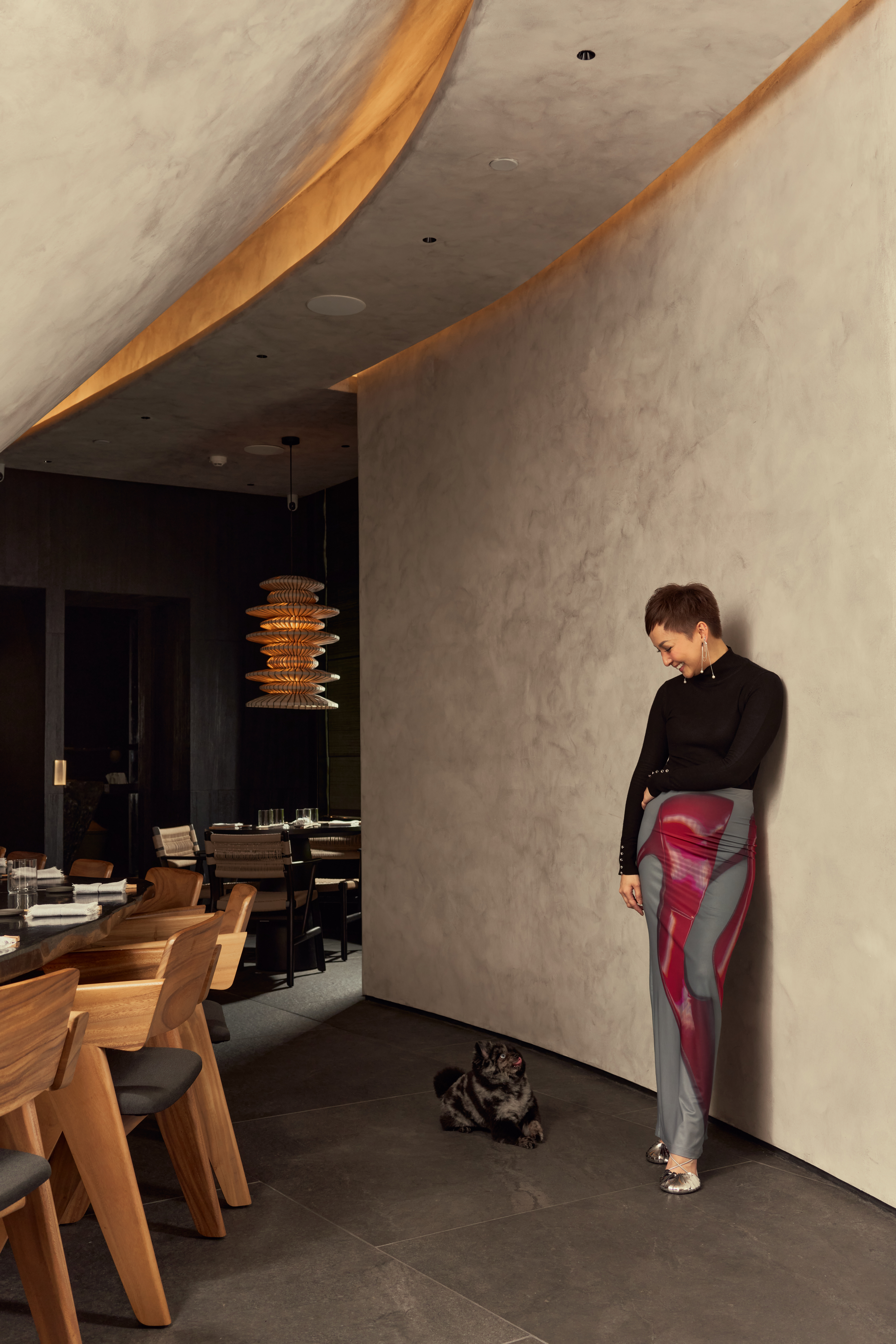
“We wanted everything here to be really tactile—a beautiful facade with a sense of location when you come in. After a while, once you’re seated, I want guests to feel that it’s a cozy place where they can lean back and enjoy the experience without feeling the need to sit up straight. I want them to want to touch everything.”
In Iai, the restaurateurs’ partnership has created a space where every detail—from the daily-changing menu to the carefully selected service ware and architectural interiors—reflects both Ricketts’ art as a chef and Pickrell’s discriminating sensibility, which refines the experience of the restaurant as a whole, in all its subtle ways.
Iai Manila is located at the ground floor of The Montane, 8th Ave. cor. 35th St., BGC, Taguig. Make a reservation here.
Photography by Artu Nepomuceno and Choi Narciso
Creative direction by Nimu Muallam-Mirano
Lighting technician Odan Juan
Photo assistant Annelies Arijs
Hair and makeup by Don de Jesus
Shoot assistants Angeli Acosta, and Lianne Chan
Cover design by Angela Chen
Produced by Ria Prieto

